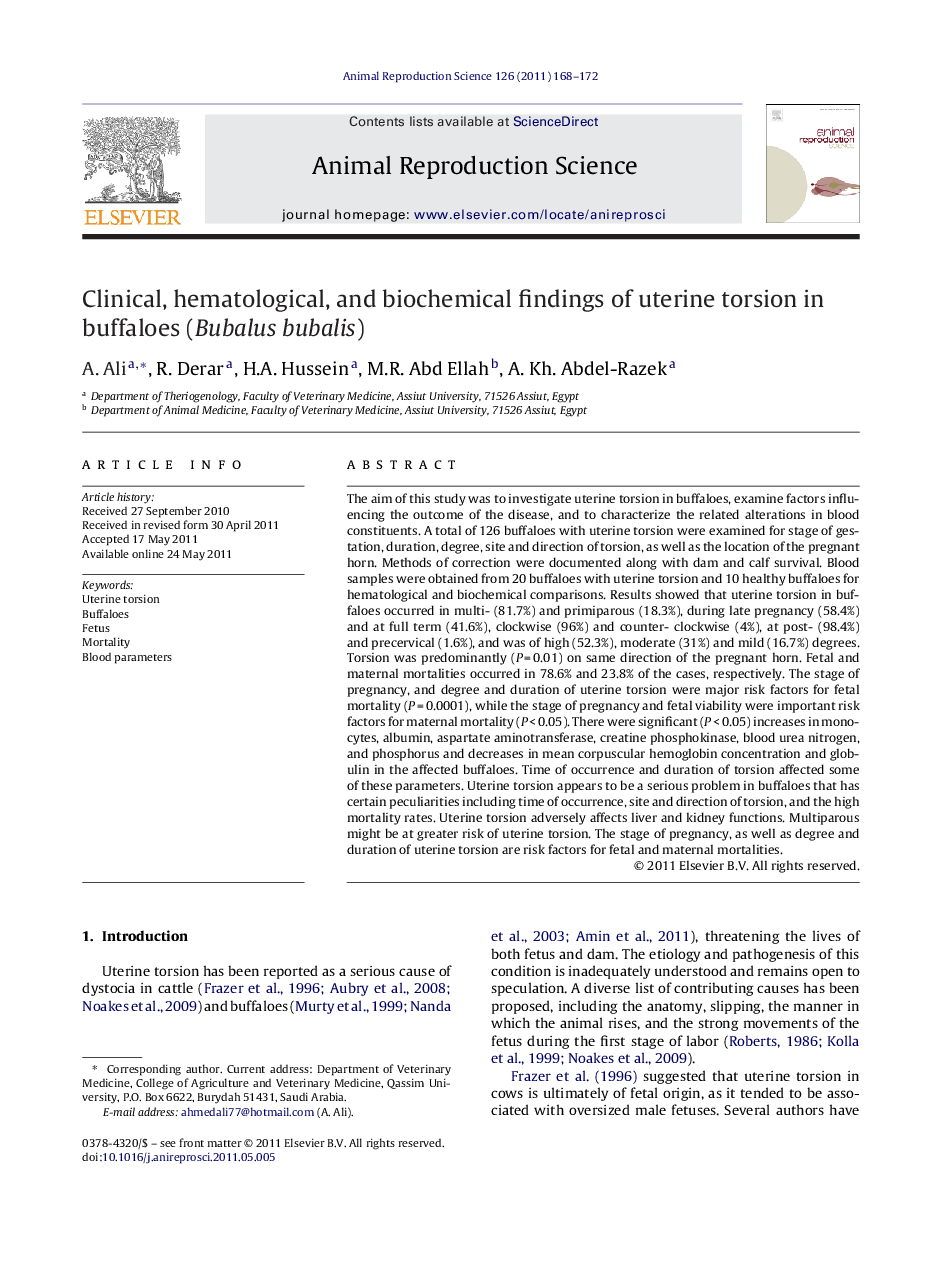| Article ID | Journal | Published Year | Pages | File Type |
|---|---|---|---|---|
| 2073324 | Animal Reproduction Science | 2011 | 5 Pages |
The aim of this study was to investigate uterine torsion in buffaloes, examine factors influencing the outcome of the disease, and to characterize the related alterations in blood constituents. A total of 126 buffaloes with uterine torsion were examined for stage of gestation, duration, degree, site and direction of torsion, as well as the location of the pregnant horn. Methods of correction were documented along with dam and calf survival. Blood samples were obtained from 20 buffaloes with uterine torsion and 10 healthy buffaloes for hematological and biochemical comparisons. Results showed that uterine torsion in buffaloes occurred in multi- (81.7%) and primiparous (18.3%), during late pregnancy (58.4%) and at full term (41.6%), clockwise (96%) and counter- clockwise (4%), at post- (98.4%) and precervical (1.6%), and was of high (52.3%), moderate (31%) and mild (16.7%) degrees. Torsion was predominantly (P = 0.01) on same direction of the pregnant horn. Fetal and maternal mortalities occurred in 78.6% and 23.8% of the cases, respectively. The stage of pregnancy, and degree and duration of uterine torsion were major risk factors for fetal mortality (P = 0.0001), while the stage of pregnancy and fetal viability were important risk factors for maternal mortality (P < 0.05). There were significant (P < 0.05) increases in monocytes, albumin, aspartate aminotransferase, creatine phosphokinase, blood urea nitrogen, and phosphorus and decreases in mean corpuscular hemoglobin concentration and globulin in the affected buffaloes. Time of occurrence and duration of torsion affected some of these parameters. Uterine torsion appears to be a serious problem in buffaloes that has certain peculiarities including time of occurrence, site and direction of torsion, and the high mortality rates. Uterine torsion adversely affects liver and kidney functions. Multiparous might be at greater risk of uterine torsion. The stage of pregnancy, as well as degree and duration of uterine torsion are risk factors for fetal and maternal mortalities.
